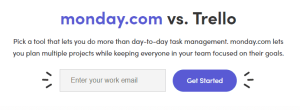
8 Instagram Growth Hacks to Crush Down Your Sales
It seems like every little thing has something to do with the numbers, don’t you think? The answer is probably somewhere in between. When

It seems like every little thing has something to do with the numbers, don’t you think? The answer is probably somewhere in between. When

Have you ever thought about how, no matter how hard you tried to make a better product or service, people are still not able to

I bet you’ve already spent many hours crafting an ingenious landing page to make it convert like there is no tomorrow. And chances are this
With more than 1bn monthly active users, Instagram has quickly grown to become one of the most popular platforms out there and probably is one
After more than a year of work and 1500+ users that helped us improve, last week (Thursday 25th) we officially launched Competitors App on Product
Monitor competitor website changes
You can get alerted when your competitors are making changes to their website.
Find competitor keywords
Finding your competitors’ keywords is essential for your business. It means that you focus your entire website on targeting high volume, quality keywords.
Track Social Media Pages
Social media competitive analysis is the constant monitoring and analyzing the moves of your competition on social media.
Competitor Email Monitoring
Tracking your competitors’ emails takes some time, but it’s well worth it!
How to do competitor analysis
One important step is to conduct an effective competitive analysis to evaluate your competitors’ brands.
Competitors App SRL
support at competitors.app
Sanzienelor 3, Sibiu, Romania
+1 (302) 208-7954